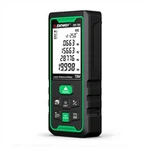What is the difference between switching power supply and transformer
The role and classification of switching power supply transformers
Before we introduce switching power supply transformers, we must first understand the concept of power transformers. Because the former is actually a device with a switching tube added to the power transformer, its original function has not changed. However, the functions of this new type of transformer are very different from those of ordinary transformers. Generally, in the circuit, this type of transformer not only has the actual function of ordinary transformers to transform voltage, but also has the functions of insulation isolation and corresponding power transmission. This type of transformer is generally used on switching power supplies of various high-frequency circuits. So what is the specific function of this product? What is its classification?
For a transformer, it is actually a device that can convert voltage. Generally we also call it a power transformer. But the difference between the switching power supply transformer and other transformers is that it has one more switching tube than the ordinary transformer. In this way, a self-excited intermittent oscillator is formed, and its function is to adjust the input DC voltage into a high-frequency pulse voltage and then output it.
In addition to the above functions, this product has a more important function, that is, the transmission and conversion of energy. Generally, in a flyback circuit, when we turn on the switch tube, the corresponding transformer will convert the electric energy into a magnetic field and store it. When we turn off the switch tube, then on the contrary, the magnetic field will be converted into electrical energy.
So how does it work in the forward circuit? First of all, when we turn on the switch tube, the relevant input voltage will be used to directly supply the load, and at the same time, it will also be passed through the inductor. Store energy. Once we disconnect the switch tube, then the electric energy will be transferred to the load through the energy storage inductance.
Finally, the switching power supply transformer can also convert the DC voltage transmitted in, so that it can output low voltage of various sizes. We have finished talking about its function, so what is its classification?
Generally speaking, switching power supply transformers can have two different categories, they are single-excited and double-excited. The two taxonomies are structured differently and work in very different ways. The single-excitation type can input unipolar pulses, and can also output forward and flyback voltages; the difference between the double-excitation type is that it inputs bipolar pulses, and most of them output bipolar pulse voltages.
Through the above text, many friends have a certain understanding of transformers. For switching power supply transformers, it is not only the difference of adding a power switch, some of his applications are more extensive. In addition, for some specific applications, the power transformer with this device can perform voltage conversion as required, achieving the effect of meeting the industrial field of multi-type voltage requirements.
Calculation Method of High Frequency Transformer Turns in Switching Power Supply
Calculation formula: N=0.4(l/d) to the second power. (N is the number of turns, L is the absolute unit, luH=10 cubic. d-the average diameter of the coil (Cm).)
For example, winding an inductance coil of L=0.04uH, taking the average diameter d=0.8cm, then the number of turns N=3 turns. When calculating the value, the number of turns N should be slightly larger. The manufactured inductance can be adjusted within a certain range.
The number of wires in a coil is not necessarily the number of turns. Only when the number of parallel windings is equal to 1, the number of wires in a coil is equal to the number of turns of the coil. The relationship is as follows: The number of wires in a coil and the number of windings × the number of turns The number of wires in each slot of the motor stator means that in a single-layer winding, the number of wires in each slot is equal to the number of turns; in a double-layer winding, the number of wires in each slot The number of wires is twice the number of turns or 2x the number of turns.
1. High-frequency transformers are mainly used as high-frequency switching power transformers in high-frequency switching power supplies, and are also used as high-frequency inverter power transformers in high-frequency inverter power supplies and high-frequency inverter welding machines. According to the working frequency, it can be divided into several grades: 10kHz-50kHz, 50kHz-100kHz, 100kHz-500kHz, 500kHz-1MHz, and above 10MHz.
2. When designing a high-frequency transformer, the leakage inductance and distributed capacitance of the transformer must be minimized, because the high-frequency transformer in the switching power supply transmits a high-frequency pulse square wave signal. During the transient process of transmission, leakage inductance and distributed capacitance will cause surge current and peak voltage, as well as top oscillation, resulting in increased loss.










